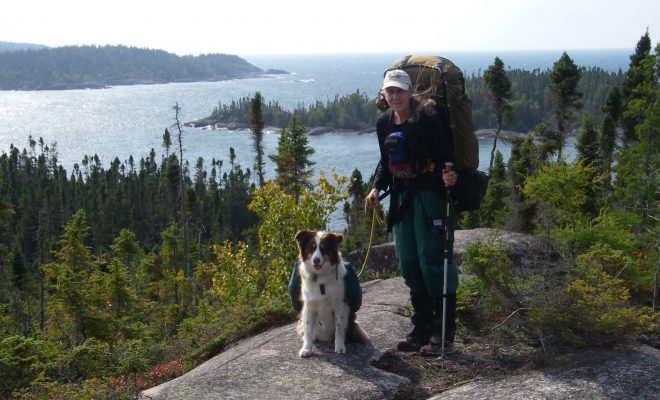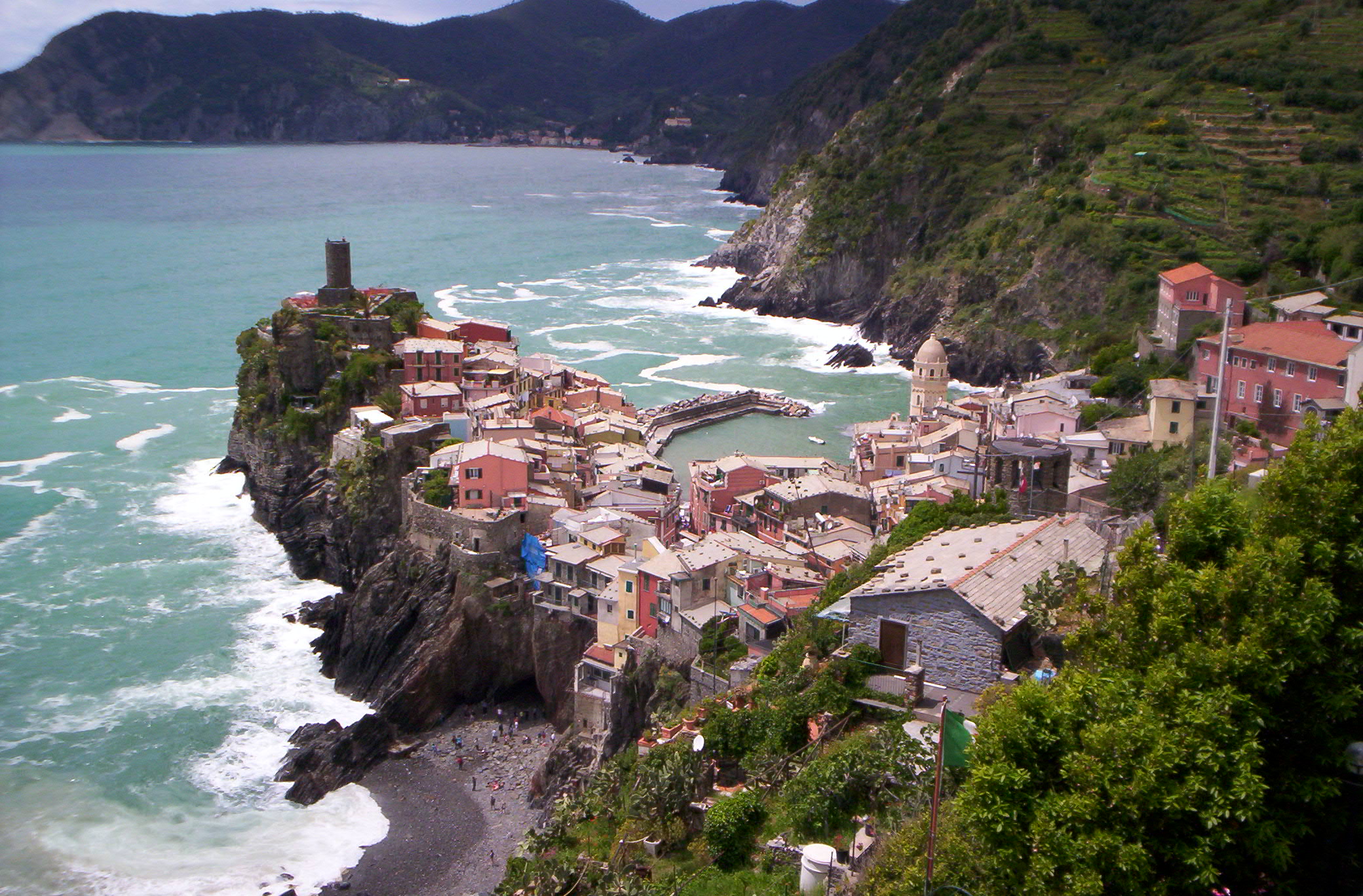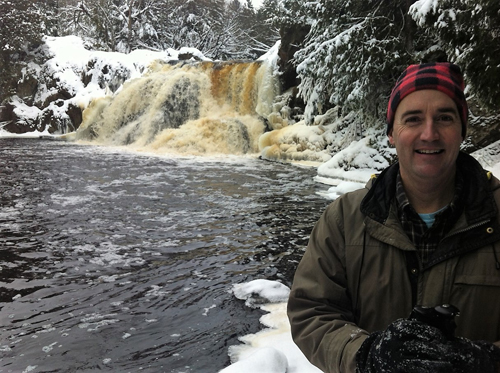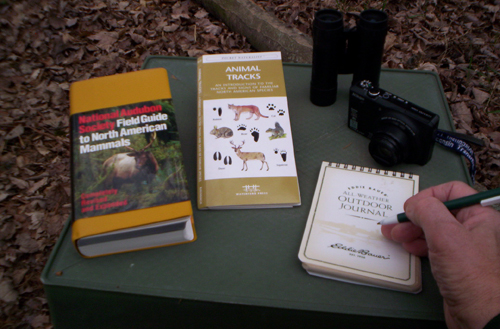Backpacking Pukaskwa National Park

BY JASON MALONEY
The Pukaskwa National Park contains the most remote, rugged and wild stretch of shoreline on the coast of Lake Superior. Located in Ontario, the park offers the adventurer amenities ranging from car camping and accessible trails to backpacking trails that are as challenging as those in parts of the Rocky Mountains. Pukaskwa is becoming a popular hiking destination for silent sports enthusiasts from the Upper Midwest because it really is silent. Once you hike into the Canadian bush there all noises of modernity cease beyond the occasional jet overhead and the much more occasional drone of a ship or boat engine out on Lake Superior.
Most travelers from the United States cross into Canada either from Minnesota or Upper Michigan. From Thunder Bay the drive to Pukaskwa National Park takes approximately 3.5 hours. It takes about five hours to get to Pukaskwa from Sault St. Marie, Ontario. The roads in Canada are generally in very good condition. To cross into Canada and back into the U.S. each traveler needs a valid passport and a clean criminal record. Dogs need current shots and shot records. Check with both Canadian and U.S. Customs to be sure you are not bringing anything across the border that is forbidden. Quantities of some items, such as alcohol, have limits beyond which you must pay duties. Checking before trying to cross can save time, money and disappointment.
To access the park you will need a Parks Canada Pass that you can purchase online. For camping you will also need a park permit that you can either buy online ahead of time, or purchase at the check in kiosk at the park entrance. For back country travel it is recommended to purchase the park permit and make campsite reservations well in advance. Parks Canada maintains an excellent website that contains accurate descriptions of each campsite. The site also contains straight forward information on the dangers inherent in travel by foot over very remote, very rough and often treacherous terrain. Adventurers embarking on a backcountry endeavor must participate in a mandatory briefing on backcountry conditions. Be prepared to describe your preparations, equipment including emergency locator devices, provide your emergency contacts and acknowledge your understanding that any rescue would be made by water.
The Lake Superior Coast in Pukaskwa National Park is almost completely Canadian Shield Granite. It is rough and beautiful. It is at once very abrasive and extremely slippery when even the slightest bit damp. Because the shoreline is so rough and rocky there are very few places to land a boat, fewer for ships. Lake Superior is known for violent weather, sudden storms and low temperatures. Should you have an emergency, even if you can successfully get word of your dilemma to the outside world, it will likely take days for any help to arrive from emergency responders. If you do not feel able to prepare well and mitigate risk effectively, do not enter the backcountry in Pukaskwa.
There are two trails through the backcountry in the park. The longer one is the Coastal Trail. It is an out and back trail that runs from the park headquarters near the Pic River south along Lake Superior about 60 kilometers. The other trail has only been open for a few seasons. It is called the Mdaabil Miikna, or “Go to the Shore Trail.” It is a 24 kilometer loop that is accessed from the northern part of the Coastal Trail. Both trails are rated as “difficult” under the Canadian trail rating system. My experience with the Canadian trail rating system is that it tends to have a higher opinion of a person’s skills. I have been on Canadian trails that were rated easy that went across fields of boulders. So really, when you see a Canadian trail that is rated difficult, believe it, that trail is difficult.
When my wife and I decided that we would like to attempt part of the backcountry trails in the Pukaskwa we had not backpacked in about a decade. Much of our mutual backpacking trips were to the Wind River Mountains of Wyoming. Each of us have had major health problems since our Wind River days. Both of us are in what might be termed the upwardly mobile on the way to elderly part of middle age. So to get ready for Pukaskwa we resorted to daily two mile hikes with 50 pound backpacks most days for about seven weeks. Our out and back training course included one long and steep hill. In addition we each put in more mileage walking, biking or running each day.
For gear we used the standard gear we had and used in the Rocky Mountains. With provisions and equipment our packs weighed around 60 pounds each. Our dog accompanied us on the trip and he carried his own pack with about 15 pounds of food and some of his gear. We dry our own vegetables, fruit and wild mushrooms and prepare our own trail rations. We use the National Outdoor Leadership School ration planning strategies to plan our backcountry provisions because they provide an excellent framework for nourishing meals with an adequate number of calories. Though the descriptions on the park website of the distances people could expect to hike in a day sounded reasonable, we planned to hike much shorter distances due to our age and the terrain. We also planned on inclement weather, which is normal along Lake Superior in the time of year we were there; September.
As it turned out, our trip plan suited us well. Because of our weeks of training we were able to handle our full sized packs on the difficult trail. But we were very glad we had planned to complete the Mdaabil Miikna in 8 days instead of in a weekend hike as described on the park website. The extra time allowed for careful negotiation of especially treacherous stretches of Canadian Shield rock. It also allowed us more time to enjoy the extraordinary scenery and other parts of the natural environment.
The Coastal Trail can be accessed on foot from the park headquarters. Backpackers can leave vehicle in the headquarters parking lot, which serves as the trailhead. It is also possible to charter a boat through reputable outfitters who will provide a drop off or pick up at the southern end of the trail, or accessible points in between. We camped at the northernmost campsite on Hattie Cove. From there we accessed Mdaabil Miikna at its northern end and camped at sites in all of it’s designated camping areas. Each area is unique, but they all share in the stunningly rugged beauty of the Lake Superior coast.
All designated camping areas also have fire rings, pit toilets and bear proof lockers. Use of lockers to store food, toiletries and any other possessions with scents that could attract bears, is mandatory. In addition to bears, other large mammals live in the park. It is possible to sight Woodland Caribou, moose and wolves. Beaver, otter and lynx also live there.
Part of Mdaabil Miikna runs along the White River and one of the designated camping areas is located at the White River’s mouth under ancient cedar trees. The part of the trail from the mouth of the White River to the suspension bridge over the river is mostly level. We found it to be the easiest part of our journey. From the bridge a beautiful rapids and falls is visible on both sides and directly below.
Backpacking and camping on the rugged and remote shoreline helps provide perspective on just how small a person is in the face of the vastness of inland wilderness and a gigantic fresh water sea. Having little or no electronic linkage to the outside world helps reenforce the smallness of one’s self. And experiencing days and nights full of a rich and varied palette of sound devoid of the drone of human made machines makes the opportunity for a full experience of nature’s cathedral complete.
For information on Pukaskwa National Park online visit [email protected] or call Pukaskwa Park staff at (807)229-0801. The Coastal Trail and Mdaabil Miikna may be more difficult than most trails in the Upper Midwest. But if you are prepared for high adventure, you will find an unforgettable experience on those trails.







